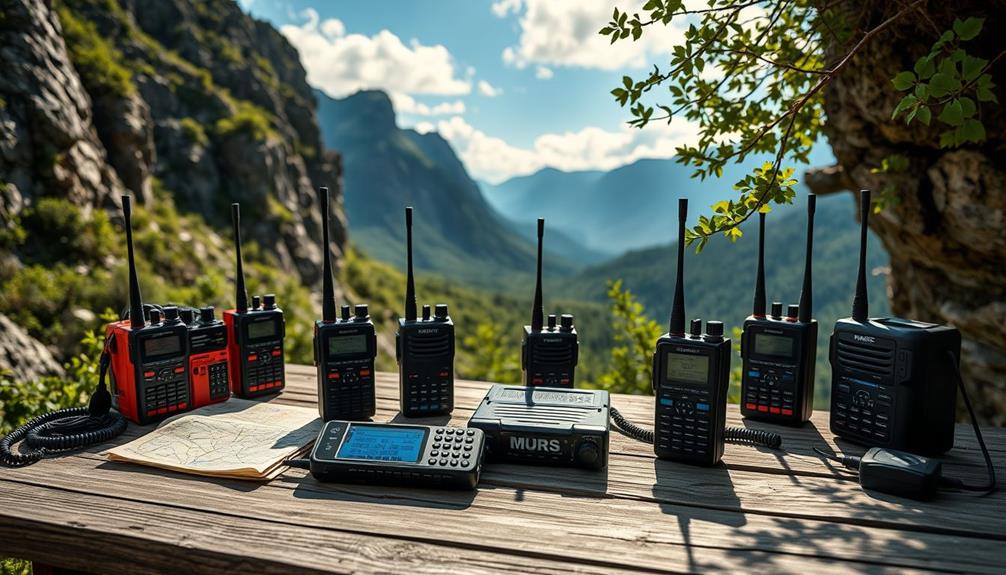To guarantee your long-term food storage is effective, start by using airtight containers like Mylar bags with oxygen absorbers to keep moisture and pests at bay. Stock up on grains like white rice, which lasts indefinitely, and dried beans that can last for years. Canned foods are excellent too, requiring no refrigeration and offering a shelf life of up to five years. Freeze-dried options can last up to 25 years, retaining nutrients and flavor. Regularly check your inventory and rotate supplies to maintain freshness. Keep learning about essential techniques and practices to enhance your preparedness strategy.
Key Takeaways
- Use airtight containers or Mylar bags with oxygen absorbers to protect grains and beans from moisture and pests.
- Store food in a cool, dark, and dry place to maximize shelf life and prevent spoilage.
- Regularly check and rotate supplies to ensure freshness and maintain an accurate inventory of your food storage.
- Incorporate a variety of foods like grains, dried beans, canned goods, and freeze-dried options for a balanced diet.
- Learn proper canning methods to safely preserve high-acid and low-acid foods for long-term storage.
Importance of Long-Term Food Storage

When it comes to prepping, you can't overlook the importance of long-term food storage. Having a well-stocked pantry guarantees you're prepared for emergencies or unexpected events. Investing in food storage sealers can help extend the shelf life of your pantry items, ensuring that your food supply remains fresh for extended periods. By properly sealing and storing bulk items such as rice, beans, and pasta, you can have peace of mind knowing you have a reliable food source in the event of a crisis. Additionally, organizing your pantry with food storage sealers can help maximize space and keep everything neatly in place for easy access during an emergency.
By diversifying your food storage options, like grains, dried beans, and canned goods, you maintain a balanced diet and keep your meals interesting. It's vital to regularly monitor your inventory, helping you track freshness and prevent spoilage.
Long-term food storage not only provides security but also peace of mind, knowing you're ready for anything life throws your way. Prioritizing these preparations can make a significant difference in your overall resilience.
Techniques for Storing Grains

Properly storing grains is essential for maintaining their longevity and nutritional value.
Begin by selecting airtight containers or Mylar bags with oxygen absorbers to keep moisture and pests at bay. For items like white rice, you can achieve an indefinite shelf life, while brown rice lasts about 12 months due to its higher oil content.
Consider using nitrogen-packed cans for dark hard wheat to enhance preservation. Always store your grains in a cool, dry, and dark environment to prevent spoilage.
If you plan to grind your grains, a hand-cranked grain mill lets you enjoy fresh flour when needed.
Regularly check your supplies, and rotate them to guarantee freshness as you consume your stored grains.
Storing Dried Beans Effectively

Dried beans are a fantastic choice for long-term food storage, offering both nutritional value and versatility in meals.
To store them effectively, follow these key tips:
- Use Airtight Containers: Store beans in airtight containers or vacuum-sealed bags to prevent moisture and pests from ruining your supply.
- Keep in a Cool, Dark Place: Choose a storage location that's cool, dark, and dry to maximize shelf life and maintain quality.
- Rotate Your Stock: Regularly check your inventory and rotate your beans to guarantee you use the oldest first, maintaining freshness.
Benefits of Canned Foods

Canned foods offer numerous benefits that make them a staple in long-term food storage. They're convenient, require no refrigeration, and have an extended shelf life of up to five years. You can easily incorporate them into your meals with minimal preparation, making them perfect during emergencies.
| Type | Shelf Life | Nutritional Value |
|---|---|---|
| Canned Meat | Up to 5 yrs | High in protein |
| Canned Veggies | Up to 5 yrs | Rich in vitamins |
| Canned Fruits | Up to 5 yrs | Good source of fiber |
| Soups | Up to 5 yrs | Comforting, filling |
| Chili | Up to 5 yrs | Packed with protein |
These foods retain significant nutrients, ensuring you maintain a balanced diet even in challenging times. Embrace canned goods for your long-term storage strategy.
Advantages of Freeze-Dried Options

While canned goods are a convenient choice for long-term food storage, freeze-dried options offer distinct advantages that make them a smart addition to your pantry.
These foods can last up to 25 years, ensuring you have nutritious meals ready when you need them most. Plus, they retain 90-95% of their original flavor and nutrients, giving you tasty and healthy options.
Here are three key benefits of freeze-dried foods:
- Lightweight and Compact: Easy to store and transport, perfect for emergency kits.
- Quick Preparation: Just add water, making meal prep simple and fast.
- Diverse Options: From fruits to full meals, variety helps maintain a balanced diet.
Incorporating freeze-dried foods enhances your long-term food storage strategy.
Proper Canning Methods

When it comes to preserving your harvest or bulk purchases, mastering proper canning methods is essential for long-term food storage. You need to know the difference between high-acid and low-acid foods. High-acid foods, like tomatoes and pickles, require the water bath method, while low-acid foods, such as meats and vegetables, need pressure canning for safety.
| Food Type | Canning Method |
|---|---|
| High-Acid | Water Bath |
| Low-Acid | Pressure Canning |
| Safety First | Always Check Seals |
Best Storage Practices and Containers

Maximizing the longevity of your food storage hinges on using the right containers and practices.
Choosing effective storage options can greatly enhance your food's lifespan and quality. Here are three essential tips to take into account:
- Airtight Containers: Use Mylar bags or vacuum-sealed bags to keep air and moisture out, ensuring freshness.
- Cool, Dark Locations: Store your food in a cool, dark, and dry area. This helps prevent spoilage and nutrient loss.
- Regular Monitoring: Check temperature and humidity levels periodically, and incorporate desiccants to minimize moisture impact.
Frequently Asked Questions
How Do I Determine My Long-Term Food Storage Needs?
To determine your long-term food storage needs, assess your household size, dietary preferences, and emergency duration. Calculate the daily food intake required, then multiply by the number of days you want to prepare for.
What Are the Best Foods for Long-Term Storage?
For long-term storage, focus on grains, dried beans, canned meats, and freeze-dried foods. They're nutrient-dense and have extended shelf lives, ensuring you have a reliable food supply during emergencies or unexpected situations.
How Often Should I Rotate My Food Supplies?
You should rotate your food supplies every six months to guarantee freshness. Regularly check expiration dates and consume older items first, maintaining an organized inventory for easy access and efficient usage of your stored food.
Can I Store Food in My Garage or Shed?
You can store food in your garage or shed, but make sure it's temperature-controlled. Extreme heat or cold can spoil items. Use airtight containers to protect against pests and moisture for ideal preservation.
What Are the Signs of Food Spoilage in Storage?
You'll notice food spoilage by changes in color, texture, or smell. Mold growth, bulging cans, and unusual odors are clear signs. Always check expiration dates, and when in doubt, throw it out to guarantee safety.
Conclusion
In a world where surprise emergencies can strike like a lightning bolt, mastering long-term food storage isn't just smart—it's downright heroic! Picture yourself as the ultimate prepper, with a pantry bursting at the seams with life-sustaining treasures. You won't just survive; you'll thrive while others scramble! So, immerse yourself in these tips and techniques, and transform your food storage game into an impenetrable fortress. Your future self will thank you as you reign supreme in the face of uncertainty!










